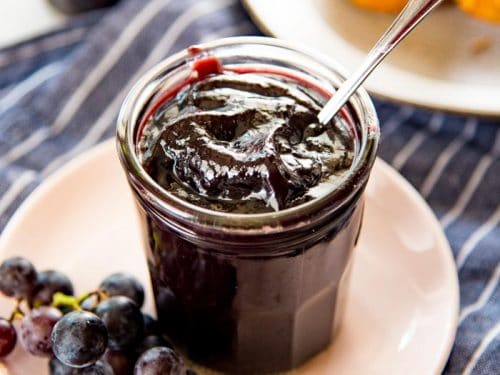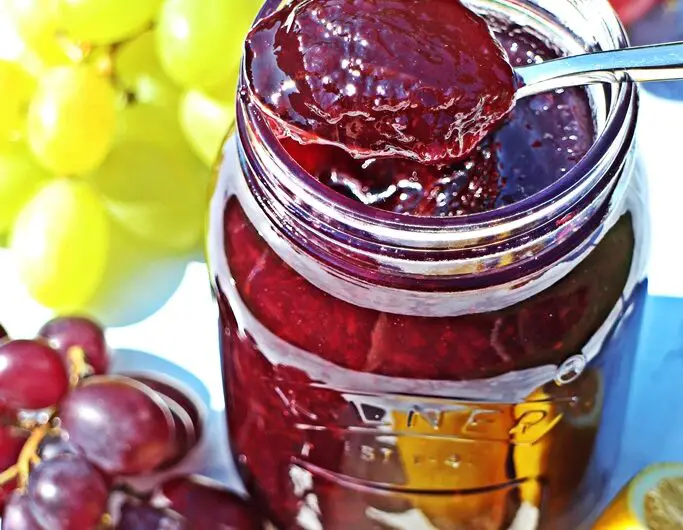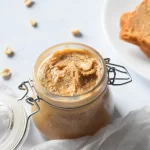Grape jelly is a popular sweet spread on toast, biscuits, and sandwiches. Making homemade grape’s jelly is not only satisfying, but also surprisingly simple.
History and Origin of Grape Jelly
Grape’s jelly has been around for centuries, with origins dating back to early European settlers in America. Native American tribes, such as the Iroquois, had already used grapes in their cuisine. They introduced early settlers to wild grapes, prompting experiments with grape juice preservation.
Jelly-making became more popular during the nineteenth century as sugar became more affordable and canning techniques improved. By the early 1900s, grape jelly had become a household staple in the United States, thanks to the discovery of pectin, a natural thickener found in fruits. Pectin made it easier to achieve the ideal jelly consistency, and commercial jelly brands such as Welch’s quickly emerged.
Here’s a simple recipe to walk you through the steps of making your own delicious grape jelly at home.
ALSO READ: Easy Grimace Shake Recipe
Grape Jelly Recipe: A Simple and Sweet Treat
Course: MainCuisine: AmericanDifficulty: Easy10
servings5
minutes10
minutes94
kcalThis is a short and simple grape jelly recipe.
Ingredients
3 cups grape juice
5 ¼ cups white sugar
1 (2 ounce) package powdered fruit pectin
Directions
- Sterilize and dry jars for jelly, and set side. I like to use my dishwasher. New lids are recommended for best results.
- Combine grape juice and pectin in a large pot over medium-high heat. Bring to a boil, and stir one minute at a rolling boil. Stir in sugar for a few minutes to completely dissolve. Remove from heat.
- Ladle the hot jelly into the jars, leaving 1/2 inch of space at the top. Wipe rims of jars with a clean dry cloth. Cover with a lid and ring to seal. Let stand 24 hours at room temperature, then refrigerate. Jelly may take up to a week to set. Once set, it is ready to serve.
- Store in the refrigerator for up to three weeks, once set. If canning for long term storage, process in a hot water bath for 10 minutes, or contact your local extension for processing times in your area.
Notes
- If canning for long term storage, process in a hot water bath for 10 minutes, or contact your local extension for processing times in your area. Processing times may vary based on sugar content and altitude.











